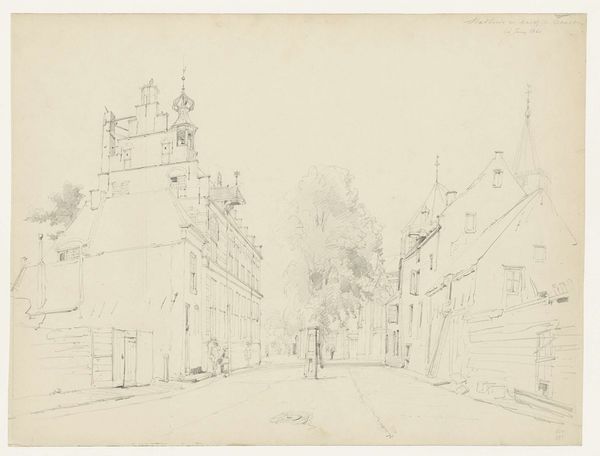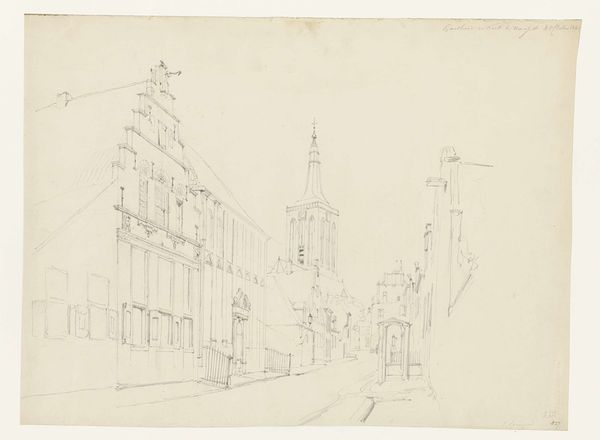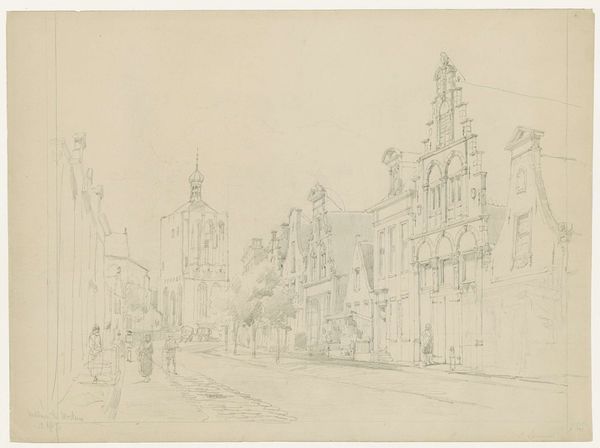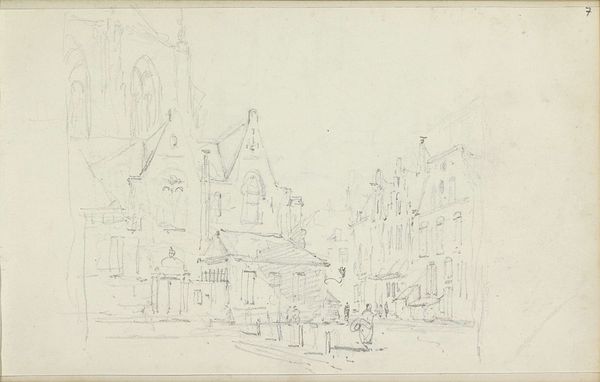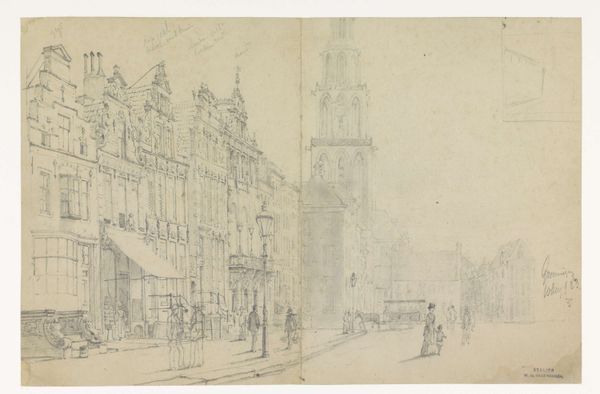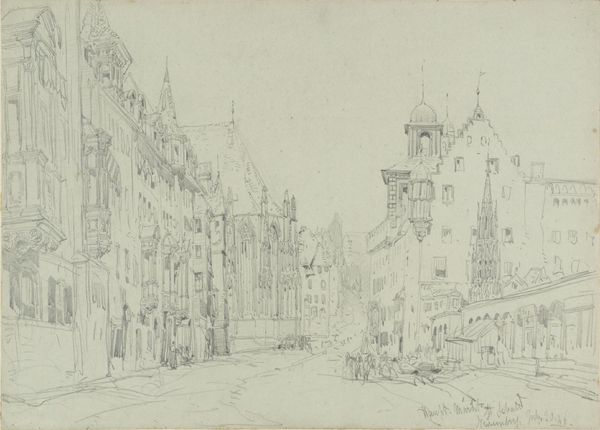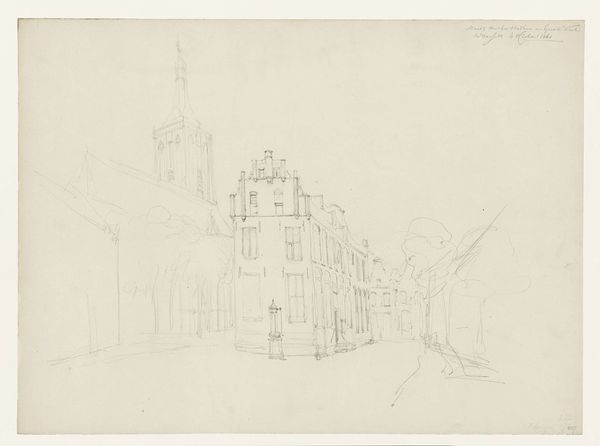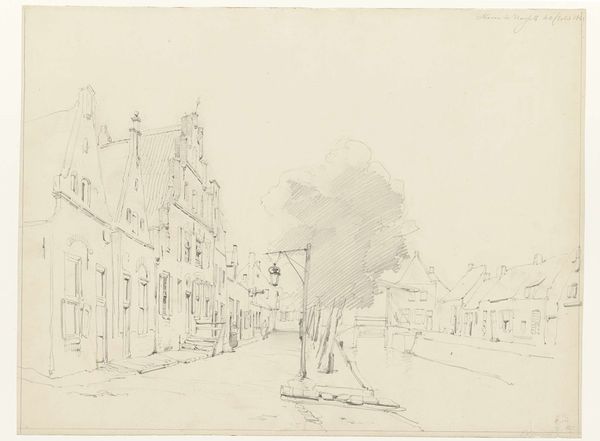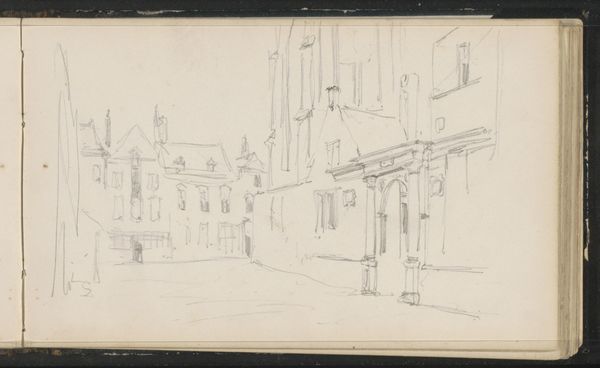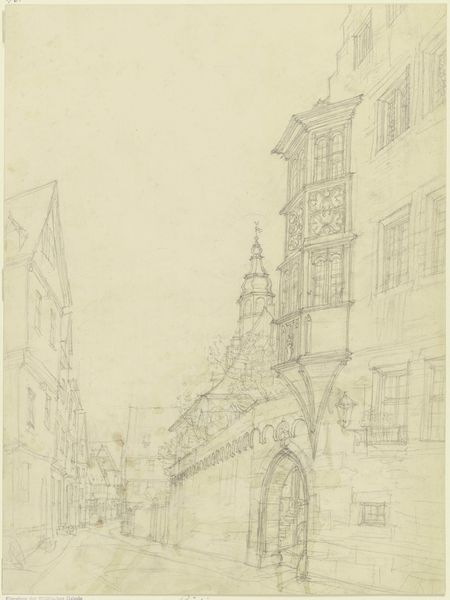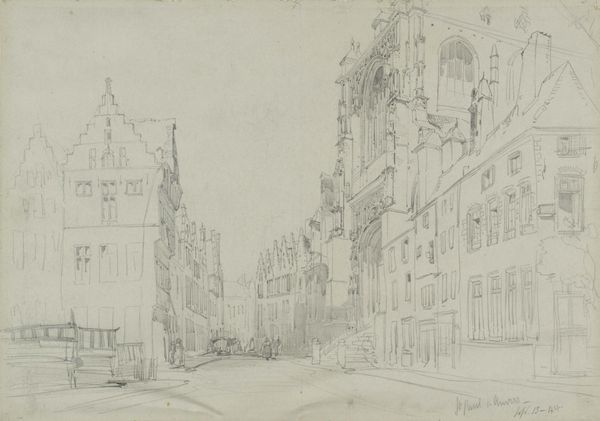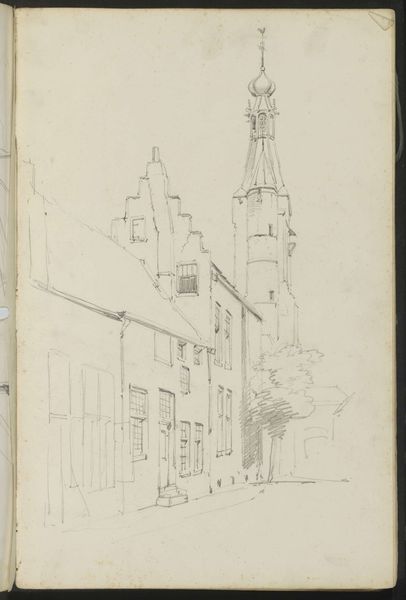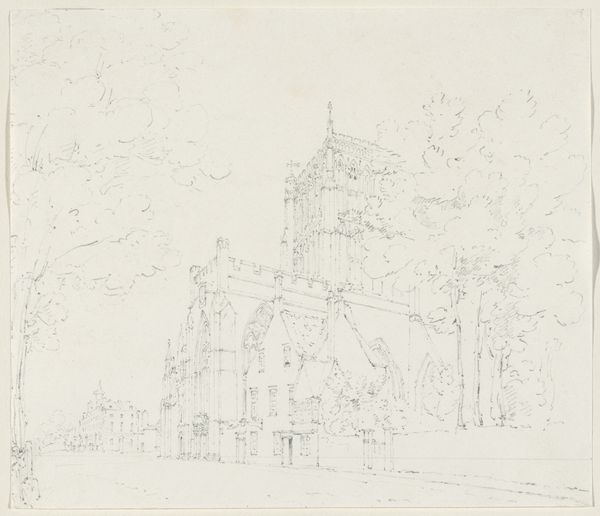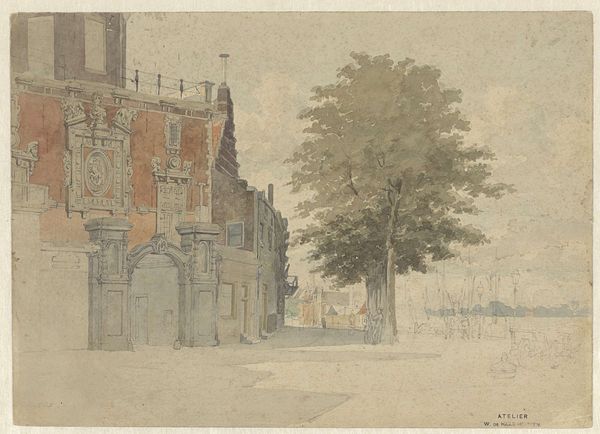
drawing, pencil, architecture
#
drawing
#
dutch-golden-age
#
landscape
#
etching
#
pencil
#
cityscape
#
architecture
#
realism
Dimensions: height 420 mm, width 563 mm
Copyright: Rijks Museum: Open Domain
Curator: What strikes me immediately about this pencil and etching by Cornelis Springer, possibly from between 1861 and 1866, titled "Stadhuis en kerk te Naarden," is its stark emptiness. It’s a cityscape, yet it feels devoid of life in some respects. Editor: The lightness of touch is what draws me in, an airy, almost dreamlike rendering. It makes me wonder, what symbolic weight did this cityscape of Naarden hold for its intended audience? Was it about civic pride, or perhaps something more subtle? Curator: That's interesting. Looking at it from a contemporary lens, I'm drawn to how the composition and bare quality reflect societal shifts during the time. Consider the historical context of 19th-century Netherlands. The drawing could offer insight into ideas about public spaces and changing socio-economic landscapes. Editor: I think the precision is fascinating; the facades, with those clean lines of brick and tile, reflect permanence. But, also there's fragility because it is captured in the fleeting quality of the pencil medium. I keep coming back to how the artist has presented these two civic archetypes together – the Stadhuis and the church – each carries its own meaning within the urban fabric. Curator: Precisely! By showing these iconic buildings within a network of evolving class structures, gender roles, and perhaps religious ideologies, the work reveals complex narratives about power and societal reform, or lack thereof. Editor: And beyond the structures, the presence of the barely-there human figures, those anonymous silhouettes remind me of collective identities being negotiated against those powers. Do they serve a more symbolic function than as pure compositional details? Curator: Undoubtedly. They could function as stand-ins for larger populations navigating those powers. Their understated portrayal might represent those navigating social complexities of their time. It really makes you question whose voices are truly heard within those frameworks. Editor: Agreed. Cornelis Springer gives us more than a depiction of architecture; he has offered up an urban portrait, with all the symbolic and psychological complexities layered into a cityscape drawing. Curator: Ultimately, "Stadhuis en kerk te Naarden" serves as a historical document and visual poem, beckoning us to look beyond surface aesthetics and discover hidden threads about urban narratives. Editor: I will look more carefully from now on at how such drawings like this remind me that symbols have a historical depth and psychological nuance, resonating across centuries.
Comments
No comments
Be the first to comment and join the conversation on the ultimate creative platform.
